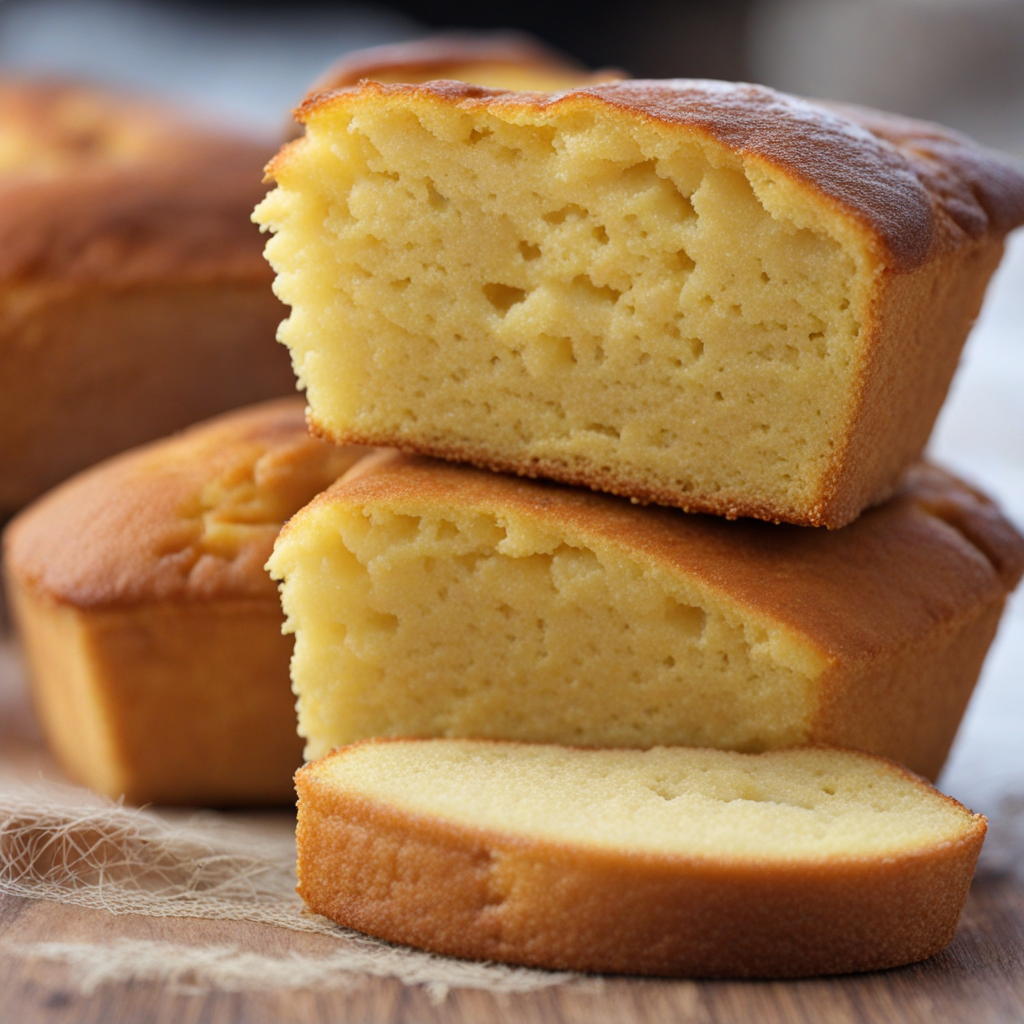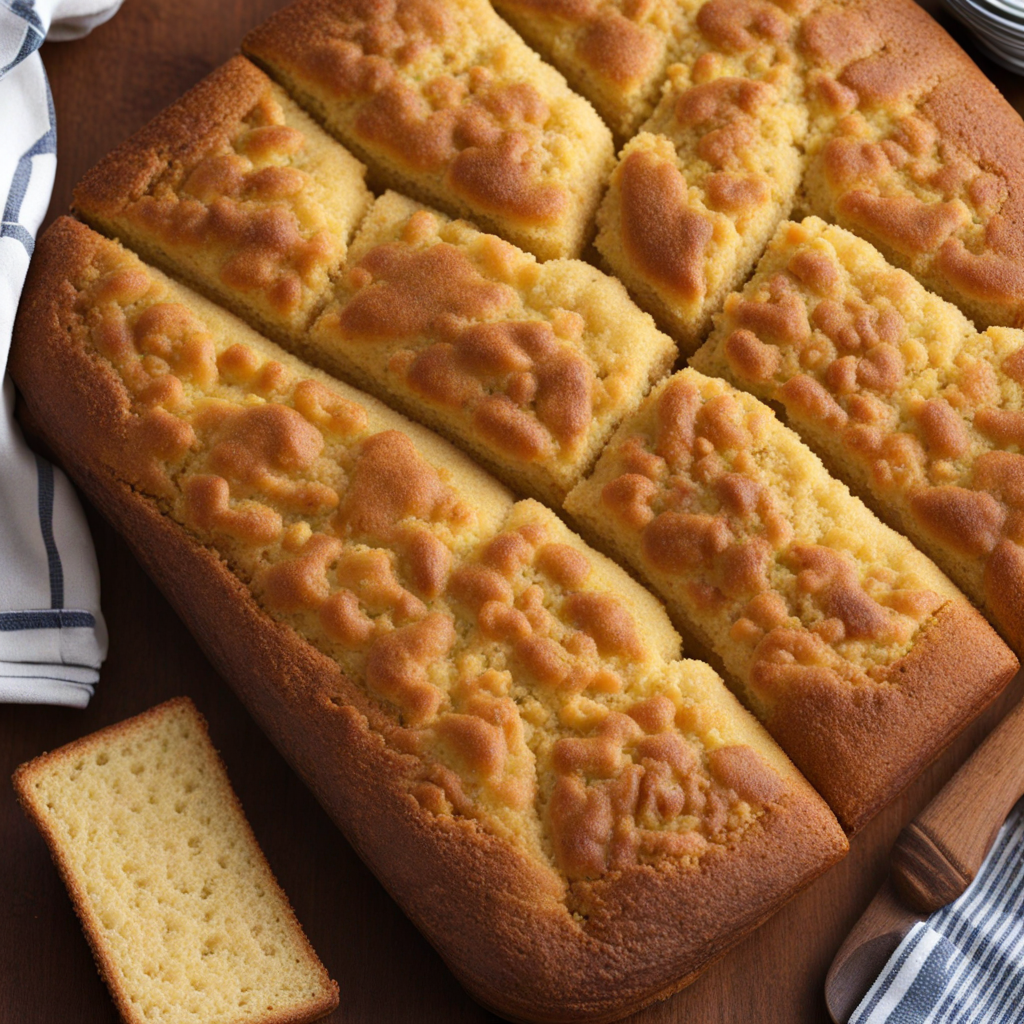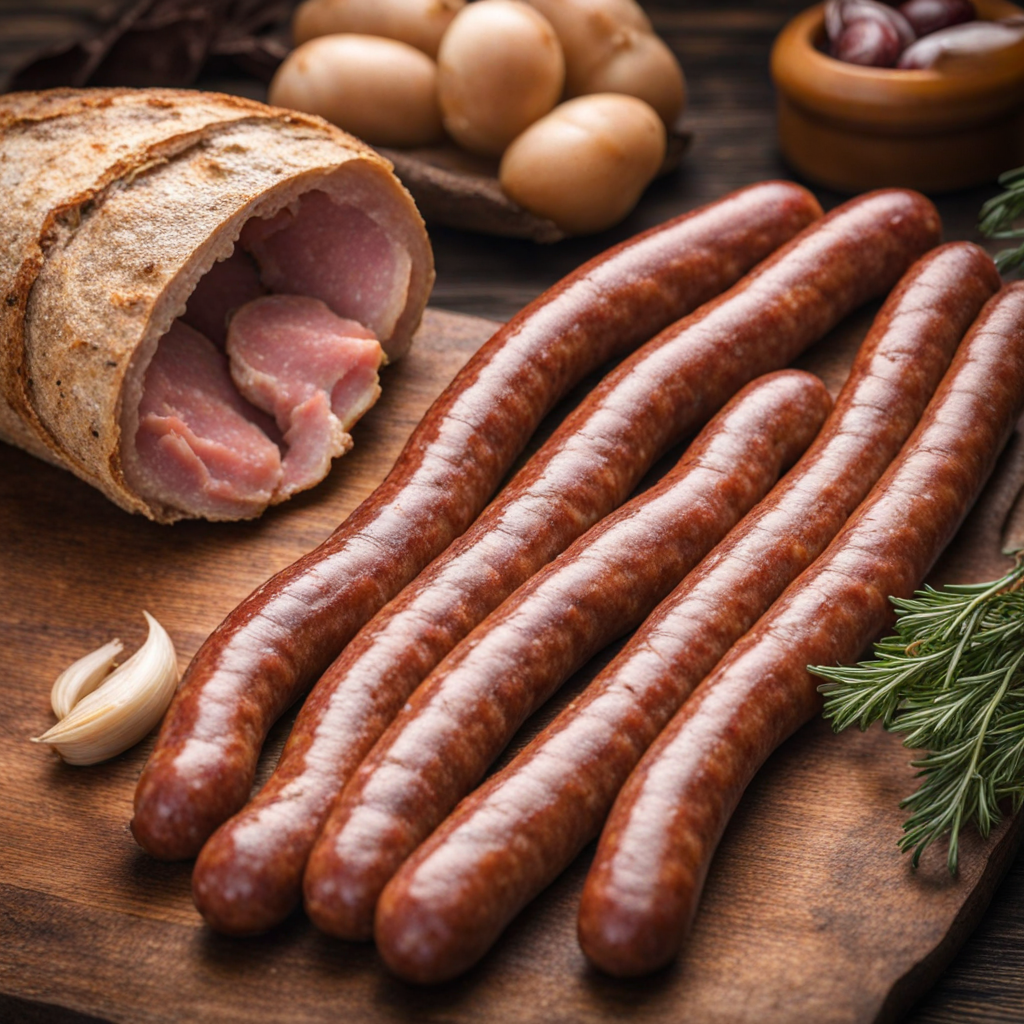Broa de Avintes
Broa de Avintes is a traditional Portuguese corn bread that originates from the small village of Avintes, located near the city of Porto. This rustic bread is characterized by its hearty texture and distinctive golden hue, achieved by using a blend of cornmeal and wheat flour. The use of cornmeal not only gives it a unique flavor but also makes it slightly denser compared to other types of bread. This bread is often baked in a round shape, with a crust that becomes beautifully crisp while the interior remains soft and moist, creating a delightful contrast in every bite. What sets Broa de Avintes apart is its subtle sweetness, which comes from the natural fermentation process. The bread typically incorporates a sourdough starter, which not only contributes to its flavor profile but also enhances its nutritional value. The fermentation allows for complex flavors to develop, making it an excellent accompaniment to a variety of dishes. Whether served alongside hearty stews, grilled meats, or simply enjoyed with a smear of butter, the bread's unique taste elevates any meal. In addition to its flavor, Broa de Avintes holds cultural significance in Portugal, often associated with traditional celebrations and family gatherings. It embodies the rustic charm of Portuguese cuisine, where simple ingredients are transformed into something extraordinary. As you take a bite, the earthy aroma of corn mingles with the tangy notes of fermentation, providing a taste experience that is both comforting and nostalgic. For anyone eager to explore new culinary horizons, Broa de Avintes offers a delicious glimpse into the rich tapestry of Portuguese gastronomy.
How It Became This Dish
Broa de Avintes: A Journey Through Time and Taste in Portugal Broa de Avintes, a traditional Portuguese corn bread, holds a special place in the culinary tapestry of Portugal, particularly in the northern region of Avintes, near the city of Porto. Its unique flavor, texture, and historical significance make it not just a staple food, but also a symbol of cultural identity and regional pride. To understand Broa de Avintes is to delve into the rich agricultural heritage of Portugal, the regional adaptations of bread-making, and the socio-economic changes that have shaped its evolution. Origins: The Roots of Broa The origins of Broa de Avintes can be traced back to the rural communities of Portugal, where corn (maize) became a crucial staple after its introduction to Europe in the late 15th century. Corn adapted well to the Portuguese climate and quickly became a primary crop, especially in the northern regions where wheat was less productive due to the cooler, wetter weather. As a result, corn became the main ingredient in many types of bread, including Broa de Avintes. In the small town of Avintes, situated along the Douro River, the local population embraced this new grain, creating a unique version of corn bread that was distinct from other regional breads. The use of cornmeal in Broa de Avintes reflects the adaptive nature of the Portuguese peasantry, who utilized available resources to sustain their families. The bread’s rustic nature—characterized by its dense texture and slightly sweet, earthy flavor—was a reflection of the agrarian lifestyle of the people in Avintes. Cultural Significance Broa de Avintes is more than just a type of bread; it is a cultural artifact that represents the history and identity of the people of Avintes and the greater Porto area. Traditionally, this bread was made in household kitchens and served as an essential component of daily meals, accompanying stews, soups, and other rustic dishes. It was particularly favored during the grape harvest, serving as a hearty sustenance for vineyard workers. The bread holds a significant place in local festivals and community gatherings. It is often baked in communal ovens, reinforcing the sense of community and shared heritage among the people of Avintes. The act of baking Broa is a social event, bringing families and neighbors together, and perpetuating the traditions passed down through generations. The bread is often associated with celebrations, such as the Feast of Saint Martin (Festa de São Martinho) in November, where people enjoy roasted chestnuts and Broa de Avintes, symbolizing the bounty of the harvest. The Recipe and Its Evolution The traditional recipe for Broa de Avintes is relatively simple, yet it reflects the skill and artistry of the baker. The primary ingredients include cornmeal, rye flour, water, and salt. Yeast is typically used to leaven the bread, although some traditional recipes might utilize a sourdough starter, imparting a unique tang to the flavor profile. The dough is kneaded by hand and allowed to rise before being shaped into round loaves, which are then baked to a golden-brown perfection. Over time, as Avintes has evolved and modernized, so too has the preparation of Broa de Avintes. While traditional methods still prevail, commercial production has introduced variations that appeal to broader markets. Some bakers now incorporate other ingredients, such as nuts or seeds, while others experiment with different grains to create gluten-free versions. Despite these adaptations, many artisans and local bakers remain committed to preserving the original recipe, ensuring that the essence of Broa de Avintes endures. Contemporary Resurgence In recent years, there has been a resurgence of interest in traditional foods, driven by a growing appreciation for artisanal bread-making and the farm-to-table movement. Broa de Avintes has gained recognition not only as a beloved local specialty but also as a representative of Portuguese gastronomy on the international stage. Food enthusiasts and chefs are rediscovering the importance of heritage ingredients and traditional techniques, leading to a revival of time-honored practices. Local bakeries in and around Avintes have embraced this movement, often featuring Broa de Avintes prominently on their menus. The bread is celebrated for its versatility; it can be served plain, toasted, or used as the base for open-faced sandwiches, showcasing local cheeses, cured meats, or seasonal vegetables. This reinvention has helped to keep the bread relevant in contemporary cuisine while honoring its historical roots. Broa de Avintes in the Global Context As globalization continues to shape culinary trends, Broa de Avintes stands as a testament to the enduring nature of traditional foods. It reflects the broader narrative of how local ingredients and cooking methods can transcend borders, influencing and inspiring chefs and home cooks around the world. The bread has found its way into international menus, often being paired with Portuguese wines and celebrated for its rich flavors. Furthermore, the growing interest in heritage foods has encouraged tourism in the region, with visitors keen to experience the authentic flavors of Portugal, including the iconic Broa de Avintes. Culinary tours often include stops at local bakeries and farms, where tourists can witness the bread-making process and learn about its cultural significance. Conclusion: A Bread of Heritage and Identity Broa de Avintes is more than just a delicious bread; it is a cultural emblem that encapsulates the history, tradition, and resilience of the people of Avintes and the wider Portuguese community. As it continues to evolve, adapting to modern tastes while retaining its core identity, Broa de Avintes serves as a reminder of the importance of preserving culinary heritage in an ever-changing world. Whether enjoyed in a rustic tavern in Avintes or at a trendy restaurant in Lisbon, this bread remains a beloved symbol of Portugal’s rich gastronomic history, connecting generations through taste, tradition, and community.
You may like
Discover local flavors from Portugal







